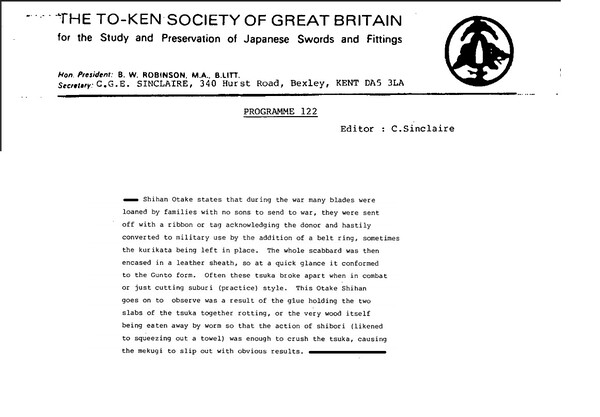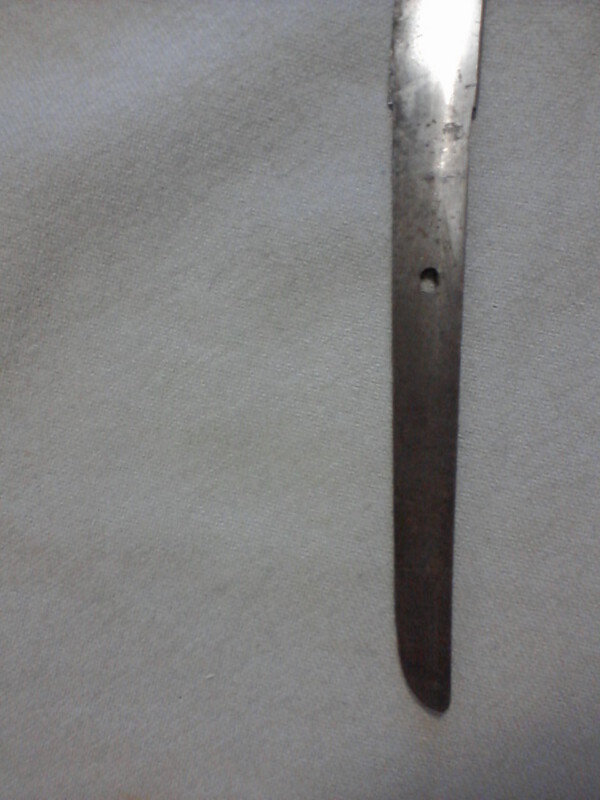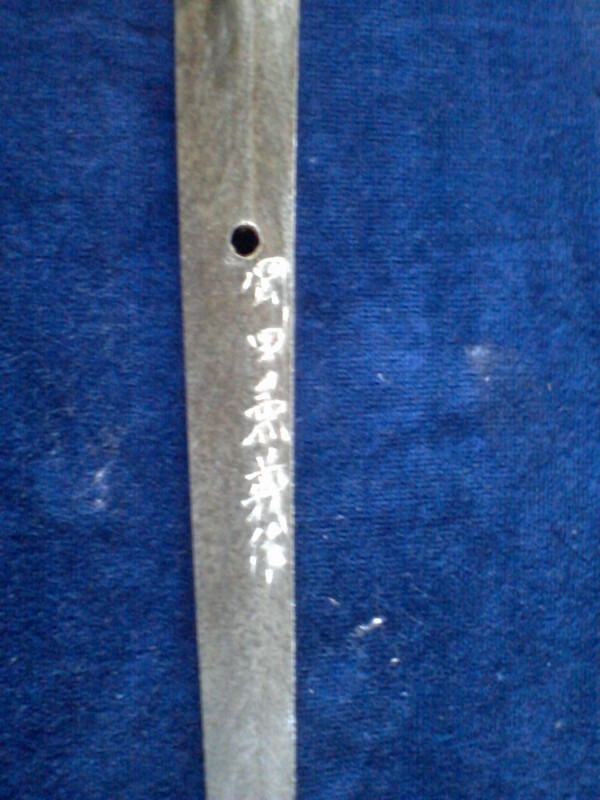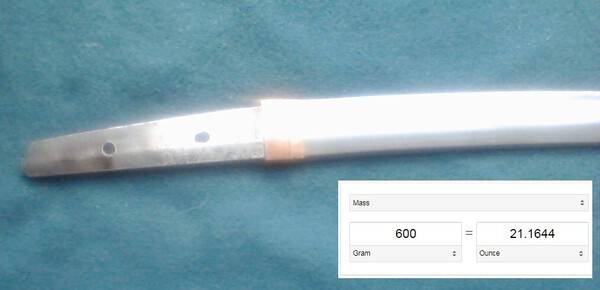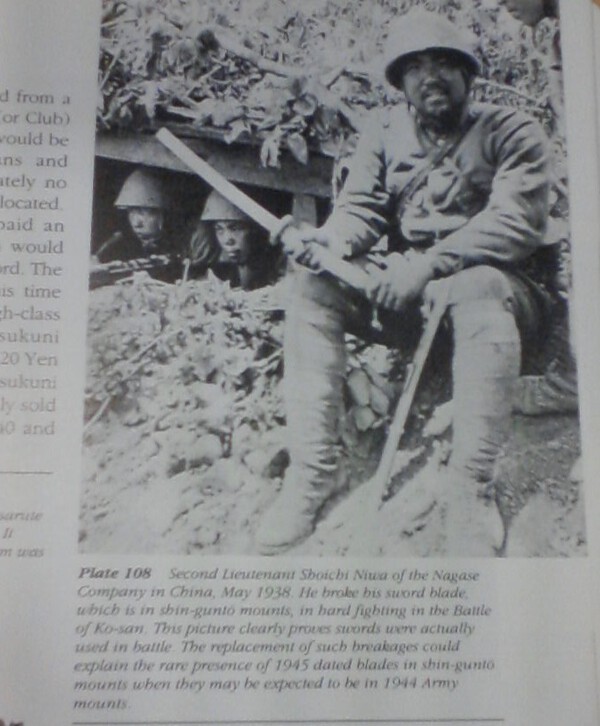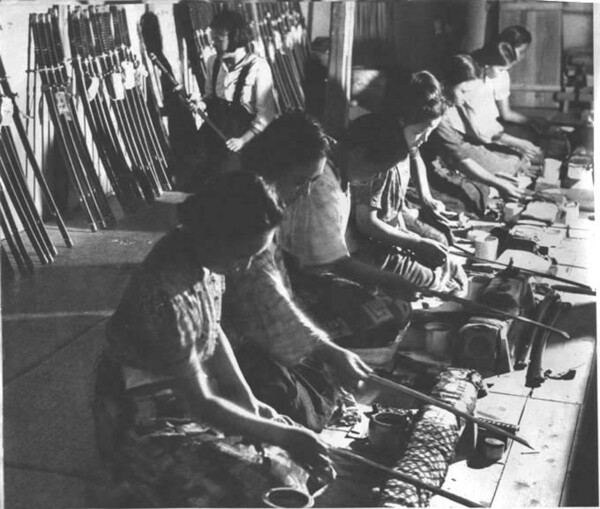-
Posts
1,690 -
Joined
-
Last visited
-
Days Won
11
Content Type
Profiles
Forums
Events
Store
Downloads
Gallery
Everything posted by Dave R
-
I always find it interesting when I see these vintage price sheets, even more interesting to run the figures for inflation since then. According to http://www.in2013dollars.com/1948-dollars-in-2018?amount=20 inflation makes that $20 something like $208.39 in 2018. In other words, not quite the steal that it looks. I have done a similar calculations for the original official price of a Shin Gunto in 1938, and found that in current money they would have cost nearly $1000. I don't have an exact figure because the calculator I used only ran JPY = $ equivalences up to 2011.
-
There is evidence for unauthorised swords, and for wakizashi in particular being carried as "backups". I think the demarcation would be as it was before, when wakizashi were for non samurai and katana for the samurai. In this photo the wakizashi is not being carried as a rank symbol, but more like an infighting blade. Captain Okuyama Michio is on a one way commando mission to Okinawa. There is an interesting discussion on the subject of wakizashi in WW2 here. http://www.warrelics.eu/forum/Japanese-militaria/civilian-wakizashi-use-wwii-how-common-739325/
-
I think we need to be aware of the difference between a standard Shin-Gunto/Katana in field mounts, and the sometimes much shorter Wakizashi in leather covers and their varied levels of conformation to regulations. Pilot sword might be a selling label, but it does nicely describe a certain type of sword that turns up on the dealers table. Myself, I think a lot of these were an individuals weapon, distinct from the regulation requirement for a sword. Much as Allied troops can be found carrying Kukri and Bowie knives, I think the shorter "Pilot swords" were non regulation personal weapons, and perhaps even carried by people with no requirement or right to bear a sword.. The closer to regulation mounts the more likely to be an authorised sword, and the further from regulation, the more likely to be something else.
-
Nooooo, don't try and refresh a polish. At the most give a blade a good going over with Uchiko, but even then not if the rest of the blade is in decent polish. Not sure about nugui, and again I would leave it to the experienced.
-
Repainted saya scream out that there has been a major amount of interference with the originality.
-
I would certainly sort out the seppa, just as I would replace a dodgy mekugi. It's a matter of safety when handling, and preventing further degradation. Re wrapping the ito, that's a personal decision, but again it's about preventing further decay, the wrap is an important contributor to the integrity of the tsuka and holds the menuki in place. Myself, I would not repaint the saya.
-
In British parlance the different scabbards, metal v wood and leather, are referred to as "Dress" and "Field" scabbards. An officers sword was often purchased with both types, and the carrying case that came with the order had an extra section for the other scabbard. Of course this was not invariable, and in wartime, economies were made.... I would not be surprised if there was a similar protocol in the IJA, quite apart from those rapid remounts for war use that we are familiar with. Some Gunto in "Field mounts" are well made and show little in the way of short cuts so familiar from those other swords described below.
-
Just my "twopennyworth" but that looks a short nakago for a Showa era blade. More often like these...
-
Use the search terms, crew or pilot sword on this forum........ There is a lot of discussion. To date I have only seen photo's of pilots with full size swords rather than the shorter ones, and lots of photo's of ordinary line officers with the so called crew gunto.
-
Agreed. It's worth remembering that a lot of these were made in workshops and by people who had never made swords before the demand drew them into the business. I have 5 of these dismounted Tsuka that I use as patterns, or as spares, and there is a big variation in detail and quality of workmanship.
-
The seppa are not the issue here, 8 seppa are not unusual, and some of them can be very chunky indeed. The mismatch with the kabutogane is odd.... Coupled with the fresh look to the ito, I think this has been a donor sword, that has been remodelled in an attempt to make it saleable after stripping of parts. In my opinion, probably worth the effort, but as I can see, others don't think so. Up to you in the end. If it's a Showato there is a good chance of finding parts that will fit ok, it's the old blades that are the headache.
-
I have a tsuka with hemp ito, and that is lacquered as well. It's usually done to weather proof the tsuka.
-
There is in fact a thread on another site about this very thing. http://www.warrelics.eu/forum/Japanese-militaria/light-weight-shingunto-686745-2/
-
Some time back I came across a reference to the Edo police (Machi-kata Doshin?) carrying lighter blades than normal. Whether this was due to carrying cheap tired blades, or purpose made light blades I don't know. I can see police needing/wanting a fast blade, and one that won't cut as deep, aiming to disable rather than maim or kill.
-
It's the difference between "Militaria" and "Nihonto"! Go onto a WW2 collection site, and see what is paid for a crap quality (by sword collector standards), aluminium handled Lufwaffe sword..... Add in rarity, because NCO swords were the first to go into the dumping scows.....
-
I have a "Wakizashi" like this as well, but the best guess we have is that it was a late period Katana, cut down very early in life as opposed to a worn blade. Buyers were wary, as some thought it a cut down Shin-Gunto, but I thought it worth a punt. Note the two piece Habaki, which has traces of gilding where protected...
-

Juyo swords found in Shin Gunto Koshirae
Dave R replied to PNSSHOGUN's topic in General Nihonto Related Discussion
Nick Komiya is very good on documentation, and certainly to be respected and listened to. And he says (writes) himself, that he is not a sword guy.... -
I have the mounts for a shikomizue, but no blade.
-
This may of may not be germane, but the reason early Fords were all black, is that black paint of the time dried faster. Perhaps an important factor in certain circumstances.
-
-
It's worth remembering that Japan was not the only nation that used tanged arrowheads. I bought a load of original antique Indian ones years ago for less than I would pay for replicas now.
-

Which smithes signed using only an Aoi Mon
Dave R replied to TheGermanBastard's topic in General Nihonto Related Discussion
Can we see the whole blade and the mounts please. -
Looks a bit like the removable second hanger from a 94, shifted up to replace the lost primary hanger. Which would fit with some other features of the sword.
-

C. Nolan's The Allure of Battle .....and nippon-to
Dave R replied to Peter Bleed's topic in Military Swords of Japan
Following the route to WW2 is an engaging exercise. The Reich had a plan, and one that had worked to a certain extent before in 1870. Japan seems to have stumbled into the war when a standard 19th century style colonial operation in Manchuria blew up into an ever expanding conflict. I remember a conversation where a friend questioned why Western Nations provided military training to "emergent nations" officers. My take on it was that it gave potential troublemakers a clear idea of just how wrong a conflict could go when engaging a Western army. I suspect Russia runs a similar program.... My personal opinion is that trouble tends to irrupt from Commanders and Dictators without that experience. Thus the difference between Tojo and Yamamoto and their expectations of how the war would develop. -

C. Nolan's The Allure of Battle .....and nippon-to
Dave R replied to Peter Bleed's topic in Military Swords of Japan
Enough to make a difference, I doubt it .This is probably why Seki used a lot of scrapped Rail track, and why you get antique blades in WW2 mounts. Mantetsu made a lot of other things for the war effort, and I think the swords were a bit of a side show. Moral boosting and good PR, but not engaging a lot of resources why else would production be low enough to create a waiting list. Apart from the arsenal produced NCO swords most new production (in my opinion anyway) was jobbed out to small firms without the machinery to produce guns or engines, and employed craftsmen without the skills for such either. We are now aware of the problems the IJA and IJN had with supply of Gunto, and I suspect a lot of that was due to priorities, resources were directed to modern weapons rather than blades, Sword production was good for moral, and engaged craftsmen and workshops who would otherwise have done little for the war effort.... Most Ito Maki was done by school girls for example!





